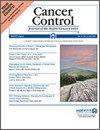Long Noncoding RNAs MALAT1 and HOTTIP Act as Serum Biomarkers for Hepatocellular Carcinoma
IF 2.6
4区 医学
Q3 ONCOLOGY
引用次数: 0
Abstract
BackgroundCirculating tumor markers with satisfactory sensitivity and specificity play crucial roles in cancer diagnosis and therapy. This prospective study aimed to evaluate the potential of circulating lncRNAs as biomarkers for hepatocellular carcinoma (HCC).MethodsA total of 74 patients with HCC and 94 healthy controls were enrolled. The expression levels of candidate genes in serum were detected by qRT-PCR. Receiver operating characteristic (ROC) curve analysis and logistic regression were employed to investigate the diagnostic capacity of lncRNAs. The analysis of 3-year overall survival (OS) was conducted using the Kaplan-Meier method and log-rank test.ResultsOf the 9 candidate genes, 6 lncRNAs could be stably detected in serum. The expression levels of circulating MALAT1 and HOTTIP in HCC patients were significantly higher than those in controls ( P < 0.001). ROC analysis showed that MALAT1 and HOTTIP were more effective than alpha-fetoprotein (AFP) ( P < 0.010) in the diagnosis of HCC, with AUCs of 0.896 and 0.899, respectively. Additionally, a panel consisting of MALAT1, HOTTIP, and AFP was constructed to obtain an AUC of 0.968 with a sensitivity of 87.8% and specificity of 94.7% in HCC diagnosis. Moreover, the upregulation of MALAT1 was not only related to multiple tumor lesions, HCV infection, AST level, and AFP level, but also suggested shorter OS. A high expression level of HOTTIP was associated with metastasis.ConclusionSerum MALAT1 and HOTTIP play indicative roles as non-invasive biomarkers for HCC.长非编码 RNA MALAT1 和 HOTTIP 可作为肝细胞癌的血清生物标记物
背景具有满意灵敏度和特异性的循环肿瘤标志物在癌症诊断和治疗中发挥着至关重要的作用。这项前瞻性研究旨在评估循环lncRNA作为肝细胞癌(HCC)生物标志物的潜力。采用qRT-PCR方法检测血清中候选基因的表达水平。采用接收者操作特征曲线(ROC)分析和逻辑回归研究lncRNA的诊断能力。结果 在9个候选基因中,有6个lncRNA能在血清中稳定检测到。HCC患者循环中MALAT1和HOTTIP的表达水平明显高于对照组(P < 0.001)。ROC分析显示,在诊断HCC方面,MALAT1和HOTTIP比甲胎蛋白(AFP)更有效(P < 0.010),AUC分别为0.896和0.899。此外,由 MALAT1、HOTTIP 和 AFP 组成的面板在 HCC 诊断中的 AUC 为 0.968,灵敏度为 87.8%,特异度为 94.7%。此外,MALAT1的上调不仅与多发性肿瘤病变、HCV感染、AST水平和AFP水平有关,还提示了较短的OS。结论 血清 MALAT1 和 HOTTIP 作为 HCC 的非侵入性生物标志物具有指示作用。
本文章由计算机程序翻译,如有差异,请以英文原文为准。
求助全文
约1分钟内获得全文
求助全文
来源期刊

Cancer Control
ONCOLOGY-
CiteScore
3.80
自引率
0.00%
发文量
148
审稿时长
>12 weeks
期刊介绍:
Cancer Control is a JCR-ranked, peer-reviewed open access journal whose mission is to advance the prevention, detection, diagnosis, treatment, and palliative care of cancer by enabling researchers, doctors, policymakers, and other healthcare professionals to freely share research along the cancer control continuum. Our vision is a world where gold-standard cancer care is the norm, not the exception.
 求助内容:
求助内容: 应助结果提醒方式:
应助结果提醒方式:


